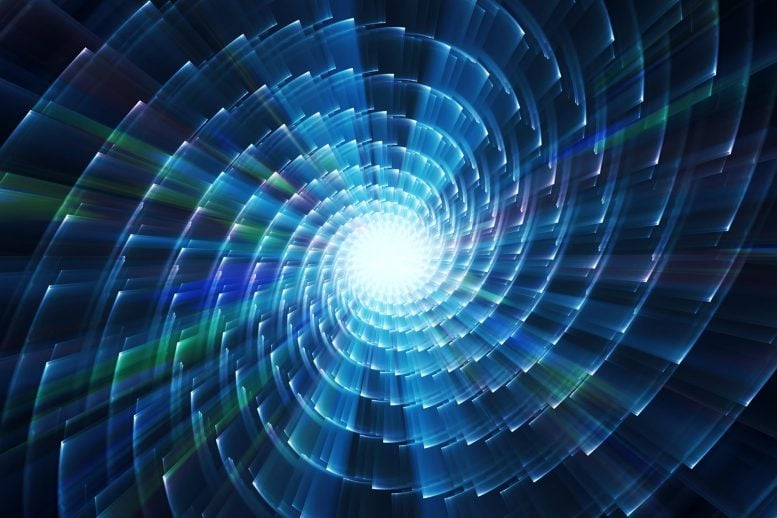
The MARATHON experiment at the US Department of Energy’s Thomas Jefferson National Accelerator Facility has uncovered new insights into the structures of helium-3 and triton by comparing these so-called mirror nuclei.
Experiment exploring mirror nuclei opens the door to new details about the internal structures of protons and neutrons
To understand more about the particles that make up our observable universe, scientists are holding up a ‘mirror’ to protons and neutrons. By comparing the so-called mirror nuclei, helium-3 and triton, the MARATHON experiment at the US Department of Energy’s Thomas Jefferson National Accelerator Facility has uncovered new insights about these particles’ structures. The findings were published in Physical Review Letters on February 9th, 2022.
Quarks and gluons, the fundamental particles that make up much of the matter we see in the universe, are buried deep within the protons and neutrons that make up atomic nuclei. Nobel Prize-winning research at DOE’s Stanford Linear Accelerator Center first proved the existence of quarks and gluons half a century ago (now known as SLAC National Accelerator Laboratory).
These groundbreaking experiments ushered in a new age of deep inelastic scattering. The quarks and gluons within protons and neutrons are probed using high-energy electrons that travel deep inside of them.
“When we say deep inelastic scattering, what we mean is that nuclei bombarded with electrons in the beam break up instantly thereby revealing the nucleons inside them when the scattered electrons are captured with state-of-the-art particle detection systems,” explained Gerassimos (Makis) Petratos, a professor at Kent State University and the MARATHON experiment’s spokesperson and contact person.
The huge particle detector systems that collect the electrons that emerge from these collisions measure their momenta – a quantity that includes the electrons’ mass and velocity.
Since those first experiments five decades ago, deep inelastic scattering experiments have been performed around the world at various laboratories. These experiments have fueled nuclear physicists’ understanding of the role of quarks and gluons in the structures of protons and neutrons. Today, experiments continue to fine-tune this process to tease out ever more detailed information.
In the recently completed MARATHON experiment, nuclear physicists compared the results of deep inelastic scattering experiments for the first time in two mirror nuclei to learn about their structures. The physicists chose to focus on the nuclei of helium-3 and tritium, which is an isotope of hydrogen. While helium-3 has two protons and one neutron, tritium has two neutrons and one proton. If you could ‘mirror’ transform helium-3 by converting all protons into neutrons and neutrons into protons, the result would be tritium. This is why they are known as mirror nuclei.

Two state of the art particle detector systems, the High Resolution Spectrometers in Jefferson Lab’s Experimental Hall A, were instrumental in collecting data in the MARATHON experiment. Credit: Thomas Jefferson National Accelerator Facility
“We used the simplest mirror nuclei system that exists, tritium and helium-3, and that’s why this system is so interesting,” said David Meekins, a Jefferson Lab staff scientist and a co-spokesperson of the MARATHON experiment.
“It turns out that if we measure the ratio of cross sections in these two nuclei, we can access the structure functions of protons relative to neutrons. These two quantities may be related to the distribution of up and down quarks inside the nuclei,” Petratos said.
First conceived in a summer workshop in 1999, the MARATHON experiment was finally carried out in 2018 in Jefferson Lab’s Continuous Electron Beam Accelerator Facility, a DOE user facility. The more than 130 members of the MARATHON experimental collaboration overcame many hurdles to carry out the experiment.
For instance, MARATHON required the high-energy electrons that were made possible by the 12 GeV CEBAF Upgrade Project that was completed in 2017, as well as a specialized target system for tritium.
“For this individual experiment, clearly the biggest challenge was the target. Tritium being a radioactive gas, we needed to ensure safety above everything,” Meekins explained. “That’s part of the mission of the lab: There’s nothing so important that we can sacrifice safety.”
The experiment sent 10.59 GeV (billion electron-volt) electrons into four different targets in Experimental Hall A. The targets included helium-3 and three isotopes of hydrogen, including tritium. The outgoing electrons were collected and measured with the hall’s left and right High Resolution Spectrometers.
Once data taking was complete, the collaboration worked to carefully analyze the data. The final publication included the original data to allow other groups to use the model-free data in their own analyses. It also offered an analysis led by Petratos that is based on a theoretical model with minimal corrections.
“The thing that we wanted to make clear is that this is the measurement we made, this is how we did it, this is the scientific extraction from the measurement and this is how we did that,” Meekins explains. “We don’t have to worry about favoring any model over another – anyone can take the data and apply it.”
In addition to providing a precise determination of the ratio of the proton/neutron structure function ratios, the data also include higher electron momenta measurements of these mirror nuclei than were available before. This high-quality data set also opens a door to additional detailed analyses for answering other questions in nuclear physics, such as why quarks are distributed differently inside nuclei as compared to free protons and neutrons (a phenomenon called the EMC Effect) and other studies of the structures of particles in nuclei.
In discussing the results, the MARATHON spokespeople were quick to credit the hard work of collaboration members for the final results.
“The success of this experiment is due to the outstanding group of people who participated in the experiment and also the support we had from Jefferson Lab,” said Mina Katramatou, a professor at Kent State University and a co-spokesperson of the MARATHON experiment. “We also had a fantastic group of young physicists working on this experiment, including early career postdoctoral researchers and graduate students.”
“There were five graduate students who got their thesis research from this data,” Meekins confirmed. “And it’s good data, we did a good job, and it was hard to do.”
Reference: “Measurement of the Nucleon Fn2/Fp2 Structure Function Ratio by the Jefferson Lab MARATHON Tritium/Helium-3 Deep Inelastic Scattering Experiment” by D. Abrams, H. Albataineh, B. S. Aljawrneh, S. Alsalmi, D. Androic, K. Aniol, W. Armstrong, J. Arrington, H. Atac, T. Averett, C. Ayerbe Gayoso, X. Bai, J. Bane, S. Barcus, A. Beck, V. Bellini, H. Bhatt, D. Bhetuwal, D. Biswas, D. Blyth, W. Boeglin, D. Bulumulla, J. Butler, A. Camsonne, M. Carmignotto, J. Castellanos, J.-P. Chen, E. O. Cohen, S. Covrig, K. Craycraft, R. Cruz-Torres, B. Dongwi, B. Duran, D. Dutta, E. Fuchey, C. Gal, T. N. Gautam, S. Gilad, K. Gnanvo, T. Gogami, J. Gomez, C. Gu, A. Habarakada, T. Hague, J.-O. Hansen, M. Hattawy, F. Hauenstein, D. W. Higinbotham, R. J. Holt,*, E. W. Hughes, C. Hyde, H. Ibrahim, S. Jian, S. Joosten, A. Karki, B. Karki, A. T. Katramatou, C. Keith, C. Keppel, M. Khachatryan, V. Khachatryan, A. Khanal, A. Kievsky, D. King, P. M. King, I. Korover, S. A. Kulagin, K. S. Kumar, T. Kutz, N. Lashley-Colthirst, S. Li, W. Li, H. Liu, S. Liuti, N. Liyanage, P. Markowitz, R. E. McClellan, D. Meekins, S. Mey-Tal Beck, Z.-E. Meziani, R. Michaels, M. Mihovilovic, V. Nelyubin, D. Nguyen, Nuruzzaman, M. Nycz, R. Obrecht, M. Olson, V. F. Owen, E. Pace, B. Pandey, V. Pandey, M. Paolone, A. Papadopoulou, S. Park, S. Paul, G. G. Petratos, R. Petti, E. Piasetzky, R. Pomatsalyuk, S. Premathilake, A. J. R. Puckett, V. Punjabi, R. D. Ransome, M. N. H. Rashad, P. E. Reimer, S. Riordan, J. Roche, G. Salmè, N. Santiesteban, B. Sawatzky, S. Scopetta, A. Schmidt, B. Schmookler, J. Segal, E. P. Segarra, A. Shahinyan, S. Širca, N. Sparveris, T. Su, R. Suleiman, H. Szumila-Vance, A. S. Tadepalli, L. Tang, W. Tireman, F. Tortorici, G. M. Urciuoli, B. Wojtsekhowski, S. Wood, Z. H. Ye, Z. Y. Ye, and J. Zhang, 9 February 2022, Physical Review Letters.
DOI: 10.1103/PhysRevLett.128.132003

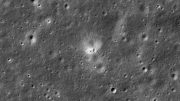
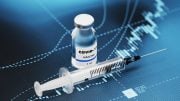
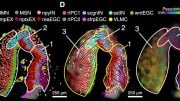

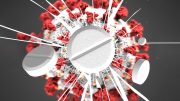
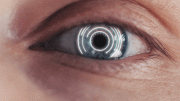
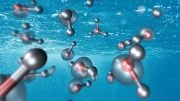
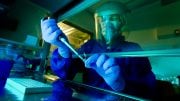
I can prove (out of box) that antiproton is neutron and vise versa .Helium-4 embed both matter H-2 and antimatter H-2 . Every atom in “Periodical Table” embed both matter and antimatter.
Hey here is something I have been working on the last couple months. If you want to see an atom captured on video in real time check this out amazing. https://youtu.be/n4dxIl9hUFs